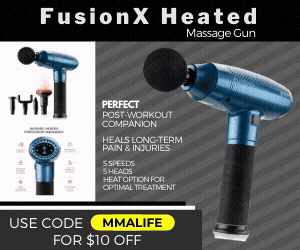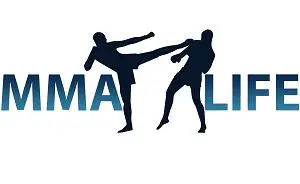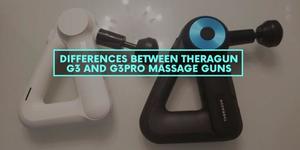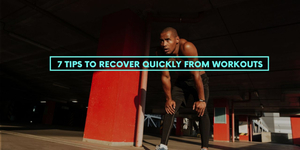One of the hottest trends in post-exercise recovery turns out to actually be quite a bit chilly.
Cryotherapy, sometimes referred to as “cold therapy,” is quickly becoming the go-to recovery tool for athletes and exercise enthusiasts worldwide.
But does fitness science and medical evidence support the claims of enhanced recovery and reduced muscle pain made by cyrotherapy’s proponents? Let’s dive in.
What is Cold Therapy?
When experts refer to cold therapy, they truly mean cold. Forget saunas and steam rooms. This is as opposite as it comes.
Cryotherapy involves exposing your body to extremely cold temperatures — we’re talking anywhere from −148° F to −220° F (−100° C and −140° C) — for several minutes. Optimal exposure typically requires two to four minutes.

In many cases, athletes use whole-body cryotherapy (WBC), where you step into an icy-cold chamber, room or enclosure and your entire body is blasted with cold temperatures.
If you opt for a more localized or casual option, cold therapy may include ice packs, ice baths, cold massage rollers, or similar methods. Either way, things get frigid — and fast!
The Scientific Verdict: Is Cold Therapy Effective for Recovery?
There’s a reason elite athletes, from Olympians to UFC fighters always implement cold therapy into their recovery routines.
While there are naysayers, as there are with any novel training or recovery modality, researchers have found that cryotherapy can bring real benefits to athletes and fitness enthusiasts.
1. Cold Therapy May Reduce Pain and Improve Recovery
If you have an injury sustained from a sporting event or a rough workout in the gym, you may be experiencing pinched nerves, nerve irritation and more. Many athletes use cryotherapy to help treat nerve pain, in part because the cold temperatures can help to numb any irritated nerves in your body.
The results may be even more promising for standard muscle pain, post-workout inflammation, and delayed onset muscle soreness (DOMs) in athletes.
In a report recently published in the International Journal of Sports Medicine, researchers reviewed 17 scientific studies and found that whole-body cryotherapy reduced muscle pain, improved athletic recovery and overall performance, soothed inflammation, and reduced signs of muscle cell damage.
2. Cold Therapy May Improve Athletic Performance
Do you want to swing harder in the boxing ring? Throw farther on the field? Swim faster in the pool? Cryotherapy may help boost your fitness.
Post-activation potentiation (PAP) describes the changes in muscular power output, and cold therapy boosts PAP which in turn may help improve your athletic performance. “The use of [whole-body cryotherapy]...may have a beneficial effect on power output related to the alleviation of pain and sense of fatigue,” reports research published in the journal Frontiers in Physiology.
For example, a study published in the Journal of Athletic Training found that only five days of cold therapy improved tennis players’ stroke effectiveness, accuracy and speed by an impressive 7%.
3. Cold Therapy Influences Your Hormone Levels
Your hormones respond directly to exercises and physical performance, and also play a big role in your athletic recovery. Testosterone is one such hormone, as is cortisol.
Testosterone helps with muscle growth and repair after you workout. It’s the primary anabolic hormone involved in rebuilding and strengthening your muscles. In contrast, cortisol is a stress hormone. Too much cortisol, and you’ll experience atrophy in your muscles (mainly your fast-twitch, type-2 muscles) and your bones.
Researchers have found that cold therapy may increase your testosterone when done within 20 minutes after a workout, and it may also reduce your cortisol levels, leading to enhanced recovery.
Reporting on the recovery benefits of cryotherapy, the Medicine & Science in Sports & Exercise (MSSE) journal — the flagship publication of the American College of Sports Medicine — notes that cold therapy used during training “helped mitigate the signs of functional overreaching...such as reduced sleep quantity, increased fatigue, and impaired exercise capacity."
4. Cold Therapy May Protect Against Oxidative Stress
Oxidative stress is when your body experiences an imbalance between the antioxidants in your system, and the free radicals produced by exercise, injuries, poor diet, etc.
When it comes to your fitness recovery, excessive free radicals slow your recovery, reduce muscle strength and leave you more susceptible to illness.
A study published in the Archives of Medical Science followed a team of rowers for two 6-day training cycles and measured markers of oxidative stress in the athletes, such as their levels of enzymes and creatine. The researchers found that cold therapy reduced oxidative stress during the athletes' intense training cycles.
Cold therapy, concluded the researchers, “seems to be an effective and safe method for limiting exercise-induced damage.” They also specifically highlighted its perks for those who want to improve their exercise recovery, noting that it “may be used in biological regeneration of sportsmen.”
How to Implement Cold Therapy in Your Fitness Regimen
Traditionally, cold therapy has been viewed as a post-workout recovery method, usually within 15-20 minutes after exercise.
However, more and more athletes and their coaches are also beginning to implement cold therapy prior to a match, race, or similar sporting event, typically in a 3-hour window before a competition.
This allows athletes to not only take advantage of cold therapy’s recovery benefits, but also its ability to minimize pain, fatigue and other performance indicators during a competition.
“This timeline differentiates the traditional use of [cryotherapy] as a recovery tool from the novel implementation of a performance enhancing technique in the preparation period,” explains a report published in the Frontiers in Physiology research journal.
For whole-body cryotherapy, athletes often visit a cryotherapy office where they step into a tank or small enclosure chilled by liquid nitrogen and overseen by expert staff. There are also a growing number of mobile cold therapy chambers, which lets athletes and coaches bring this potent recovery tool to their games or competitions.
For a more casual, or more portable, option, you also have various tools available for purchase online that you can use at home or at the gym.
1. Ice Baths and Cold Showers
Also known as cold-water immersion, an ice bath simply involves filling a bathtub (or similarly sized container) with ice water, then adding ice cubes and submerging yourself for 15 to 20 minutes.
In one study, an ice bath immediately after exercise reduced leg muscle fatigue by an incredible 34%.
Similar to this are cold showers and “contrast showers” (a hot shower followed by a blast of icy water). (Sources 1, 2)
While showering doesn’t appear to have the same prominent recovery benefits as true cold therapy (perhaps due to these therapies not being as cold), a review in the journal PLoS ONE found that cold water therapy improved recovery and "resulted in significantly greater improvements in muscle soreness" compared to more traditional, passive forms of recovery, such as stretching and compression.
2. Ice Packs
Whole-body cold therapy, whether it’s a cryotherapy chamber or getting submerged in an ice bath, may be overkill if you’re looking at recovery in a specific area of your body (e.g. your calves, or your biceps).
More localized options can include ice packs and similar applications of cold therapy to small, isolated parts of your body, and they still carry many of the benefits of whole-body cold therapy, including reduced pain and inflammation.
A simple pack of ice, wrapped in a towel, gets the job done. For a more sophisticated approach, you may want to consider cold therapy gel wraps, or specialized cold therapy ice packs designed for specific areas of your body (e.g. your neck or your knee).
“Local and cold therapies are widely used to relieve symptoms of...inflammation, pain, muscle spasms, and swelling, especially chronic inflammatory ones, injuries, and overuse symptoms,” explains researchers for the Frontiers in Physiology journal.
3. Dynamic Tools
With the burgeoning popularity of cold therapy, more dynamic tools are hitting the market that combine this recovery tool with other recovery modalities.
For example, massage is a go-to recovery method for many athletes, helping muscles to heal and repair themselves, improving blood flow to injuries, and soothing inflammation. Today, you can try cold therapy massage rollers, such as the Cryosphere Roller, which combine the benefits of both cold therapy and physical manipulation.
Whatever options you choose for cryotherapy, leave the mittens and winter jacket behind and explore cold therapy for yourself. Experience all the many ways that a few minutes of icy discomfort can help you recover faster from a competition, improve healing and muscle/tissue repair, and boost your athletic performance in all sports and competitions.




